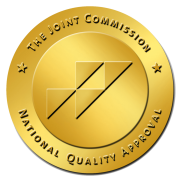Developing and Implementing a Recovery Management System
 Policy and Administration Changes are required to implement the move from an acute-care model to an outpatient and recovery management system. Included in these changes are prerequisite revisions in administration:
Policy and Administration Changes are required to implement the move from an acute-care model to an outpatient and recovery management system. Included in these changes are prerequisite revisions in administration:
- SUD treatment and recovery management must be integrated with primary medical care, mental health treatment and management.
- Government and private funding sources must move away from purchasing time, or session-limited units of service to purchasing an integrated program of management and support for long-term recovery. The emphasis must shift away from treatment intensity (crisis stabilization) to treatment extensity (prolonged recovery maintenance).
- Treatment and management outcomes should be evaluated on intermediate and long term results rather than immediate and/or results.
- Provider education and training must place a greater emphasis on recovery principals and processes. Peer-based recovery support should be expanded. Staff turnover must be minimized to achieve better continuity toward recovery support relationships.
- Organizational paradigms and interpersonal relations must shift from paternalism to partnership- from hierarchical control to reciprocal respect.
- Individual, unit and organizational performance should be based on key recovery indicators. (1)
Programmatic and service changes will necessarily include improvement in therapeutic strategies and objectives:
- Attraction: Identify and engage clients and families as early as possible (assertive community education, screening and outreach).
- Engagement: Enhance access, therapeutic alliance, and retention (expedite service initiation, focus on relationship-building and regular re-motivation, altered policies related to administrative discharge).
- Assessment: Develop assessment protocols that are global, family-centered, strengths-based and continual.
- Service Planning: Transition from professional-developed treatment plans to client-directed plans.
- Service Menu: Focus on service elements that have measurable effects on recovery outcomes; expand the service menu to include non-clinical, peer-based recovery support services.
- Service Duration: Shift from “emergency room” models that emphasized brief, crisis-oriented services to “recovery modes” that emphasize long-term, lower intensity recovery maintenance services.
- Service Relationship: Shift from a professional expert model to a long-term recovery partnership/ consultant model; philosophy of choice for individuals and families.
- Continuing Care: Shift from “aftercare” as an unfunded afterthought to assertive models of continuing care for all clients (regardless of discharge status). (Monitor client after discharge, provide stage appropriate recovery education and coaching, link clients to communities of recovery, and provide intervention again). Expand use of cell phones and internet for long-term monitoring and support.
- Relationship to the Community: Increase utilization of indigenous recovery support resource in the community (recovery support groups, recovery community organizations).
(1) White, W.L. & McLeallan, A.T. (2008) Addiction as a chronic disease: Key messages for clients, families and referral sources. Counselor, 9(3), 24-33.
(2)White, Boyle, Loveland, 2003; Evans, 2007, White, in press

